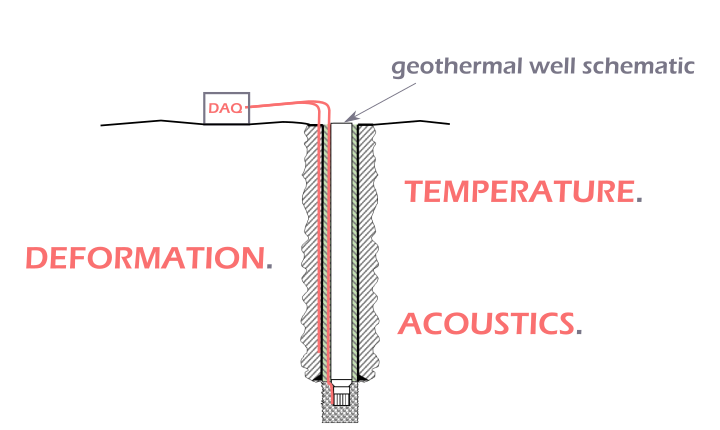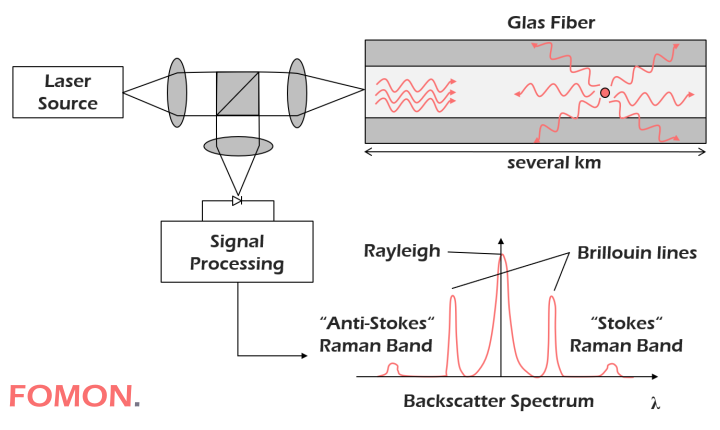Distributed fiber optic sensing
How does it work?
With distributed fiber optic sensing it is possible to measure physical parameters such as temperature, acoustics and strain all along a glass fiber. There are no additional sensors required. The fiber itself is the continuous sensing element. Once implemented to a technical structure, fiber optic distributed sensing is easy to use, provides high accuracy data, monitoring possibility at any time, passively without interfering with the operational schedule.

Over the last decade, a huge global industry was built focussing on the development of measurement units for distributed fiber optic sensing for all sorts of technical applications. Despite the internal complexity of each of the individual system, the functioning of this technology can be simplified by its three main components. These include a laser source, the sensing optical fiber and a photodetector coupled to a signal processing unit. Light from the laser source is guided along the core of the fiber. As the light travels along the fiber, a fraction of the light is continously scattered. A fraction of this scattered light is guided back into the direction of the laser where it is then detected and processed to a digital signal. So, by measuring the two-way-travel-time of the light from the laser source to the detector, we can obtain the physical origin of the scatter location in the fiber. In the light that is backscattered to the detector, the physical information of the relevant parameters such as temperature, acoustics and absolute deformation.


